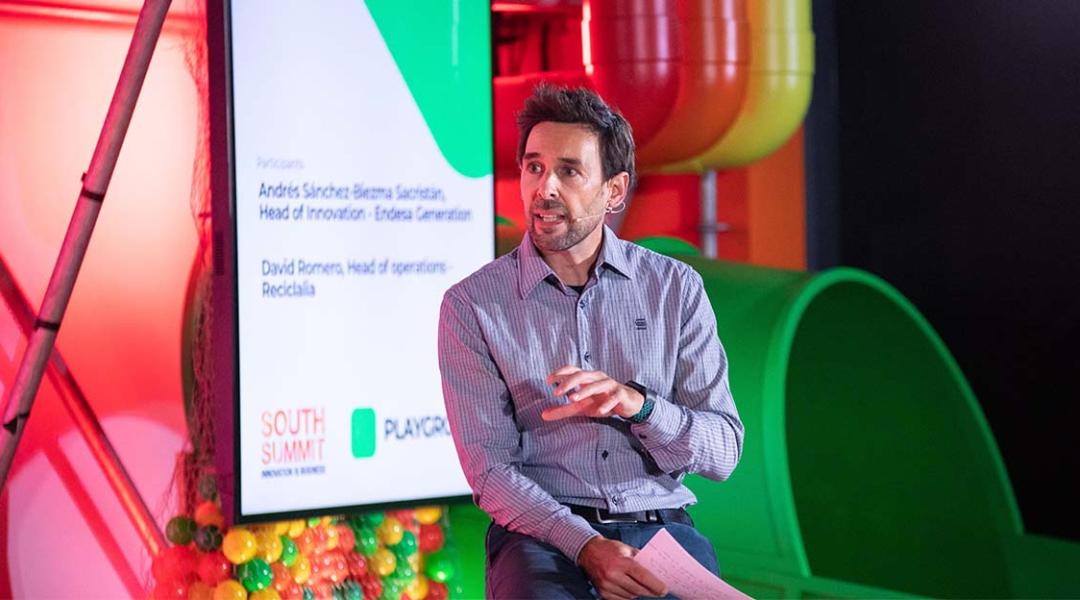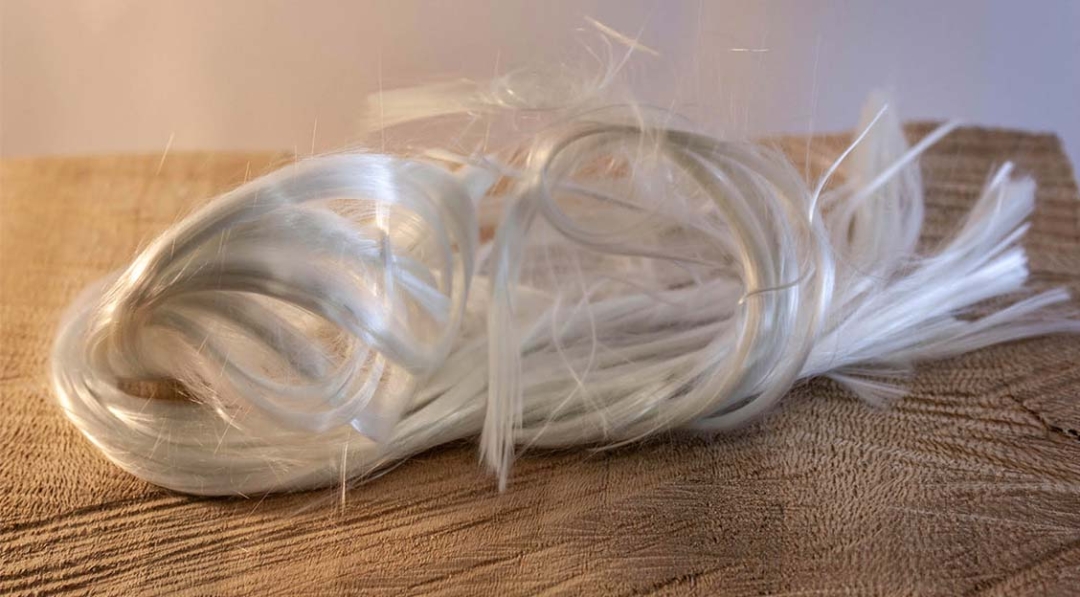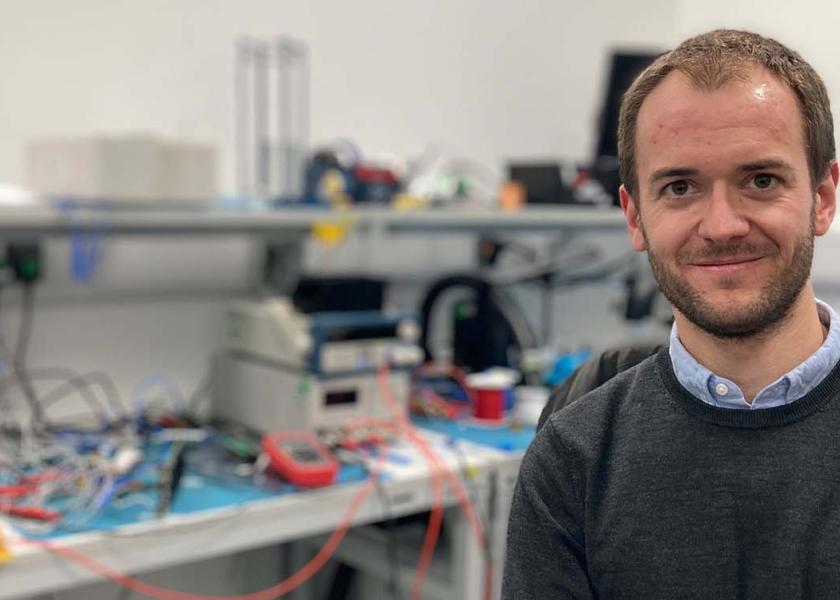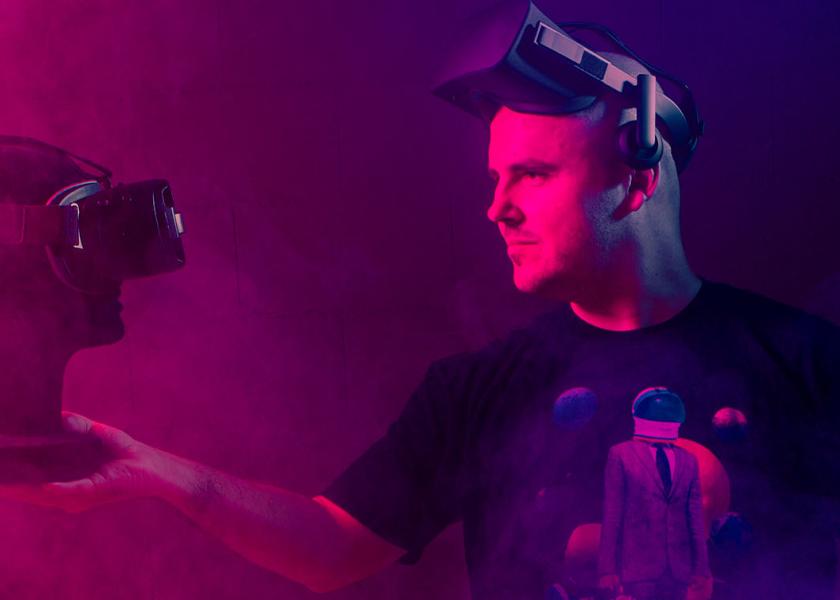David Romero
Towards a circular economy

David Romero’s life wouldn’t make sense without R&D&I. Embodying it is, in his own words, the key to progress. One of those inspirations became an exhalation called Reciclalia. His company found the way to recycle composite materials and, since then, bets on the circular economy as the only way to ensure real sustainability.
A decade ago, David Romero asked himself a question: what to do with waste that, at that time, could only be sent to landfill because no technology that allowed it to be recycled existed. That waste was composite materials, basically, fibreglass and carbon fibre, which large structures are manufactured with —wind turbine blades, for example—. Alongside two more partners, to solve this problem he created a company that has become a role model, and its discourse invites us to breathe R&D&I to progress and build a circular economy model that benefits the planet.
What is Spain’s situation in terms of recycling?
Now it’s time to be more ambitious because the recycling model has fallen short. We need to start thinking, living, and working according to a circular economy model where all waste can become resources for other processes. We must imitate nature. Ecosystems are perfect processes where there’s no waste because it is used by the next link in the chain. It is only through this circular model that we will be able to ensure real sustainability which will allow us to keep developing empathically with our environment. That’s the challenge we need to face as individuals and as a society.
Are Spaniards really aware of the importance of recycling?
In the last few years, in the industry sector I do feel greater awareness and involvement from companies. In my day to day, I can see that certain positions related to sustainability and the environment are starting to gain weight within organisations. Obviously, it’s all connected, and I believe that social pressure on topics related to the environment is pushing this concept change at a corporate level.
“We need to start thinking, living and working according to a circular economy model”
And what’s up with the next generations?
Let me tell you a little anecdote. At the high school my daughter goes to, every year they hold a Science Week and I’ve been invited several times to give a talk about how science and R&D&I can help sustainability. I was surprised when, after my talk, a considerable group of students preferred to continue the debate, explaining their thoughts, than take a break in the playground. For me, after working in this field for more than 20 years, it’s been one of the most gratifying experiences and proves that future generations still have a lot to say on this topic.
Is there enough investment in R&D&I in Spain?
There’s never enough investment in R&D&I. Research and development are the breath that keeps us alive, which makes us progress and improve. We must focus on making that R&D&I productive by supporting early research, where many results aren’t commercially exploitable but become the cornerstone which support subsequent developments. The R&D&I strategy must cover all phases, from conception to scaling or industrial prototype. This, taken to environmental territory, will allow us to develop new technologies to extend the list of waste that can be recycled and reused.
Can everything be recycled?
The answer is a resounding yes, and that’s where R&D&I plays a crucial role to enable the development of new ideas that allow us to increasingly extend the list of recyclable materials. We have to work on a paradigm shift: getting all actors in the value chain involved and searching for collaborative strategies between sectors that can feed each other and close the materials cycle.

David Romero’s company creates recycled fibreglass from wind turbine waste. © Reciclalia
But there must be something that can’t be recycled?
If we understand the concept of circular economy correctly and provide our research centres, universities, and companies with enough resources to overcome traditional recycling industry barriers, I’d dare to say that there’s nothing that can’t be recycled. Even though this statement may seem ambitious, time will make it a reality in the near future.
Which are the dangers of not recycling?
To name a few: the pollution of soils, subsoils, and aquifers. The pollution of sea ecosystems with plastics and microplastics deserves a special mention. Also, we’re losing soil that is really valuable for other uses by burying materials which, in the case of composite materials, may remain there for thousands of years without decomposing. But those risks go beyond the traditional environmental impacts we read about daily in the news. Not recycling, not moving towards a circular economy, also entails serious risks for the economy.
And which are the benefits?
The circular economy is the tool we have to face the growing demand for raw materials and, at the same time, solve the lack of resources we’re experiencing lately. This reduces our dependence on other countries, improves competitiveness, and increases sustainability. We also reduce pressure on the environment and the impact on the climate.
“There’s never enough investment in R&D&I. Research and development are the breath that keeps us alive”
You poured your talent into your company, and it has become a role model within this sector. What distinguishes you from the rest?
The main difference is our technological development, which has made us pioneers within the sector of wind turbine recycling, but also a global conception of both the problem and the solution that we must provide our clients. Under this circular economy vision, we’re not limited to solving only part of the problem, like recycling the blades, rather we offer a comprehensive solution. This conception, this global and circular solution, is what is allowing us to develop a sustainable ecosystem focused on recycling and reusing composite materials.
What gestures can we, individuals and companies, make to contribute to recycling and cleaning up the world?
We must think that we are part of a perfect closed ecosystem or, in other words, think circularly instead of linearly. It’s not hard, it means highlighting the value of our parents’ or grandparents’ actions. They didn’t know the term ‘sustainability’, but without knowing it, they acted sustainably. Now we’re much more informed about the risks of not acting sustainably and we have the means to prevent this situation. The only thing we should permanently send to landfill is that obsolete concept of disposability.


